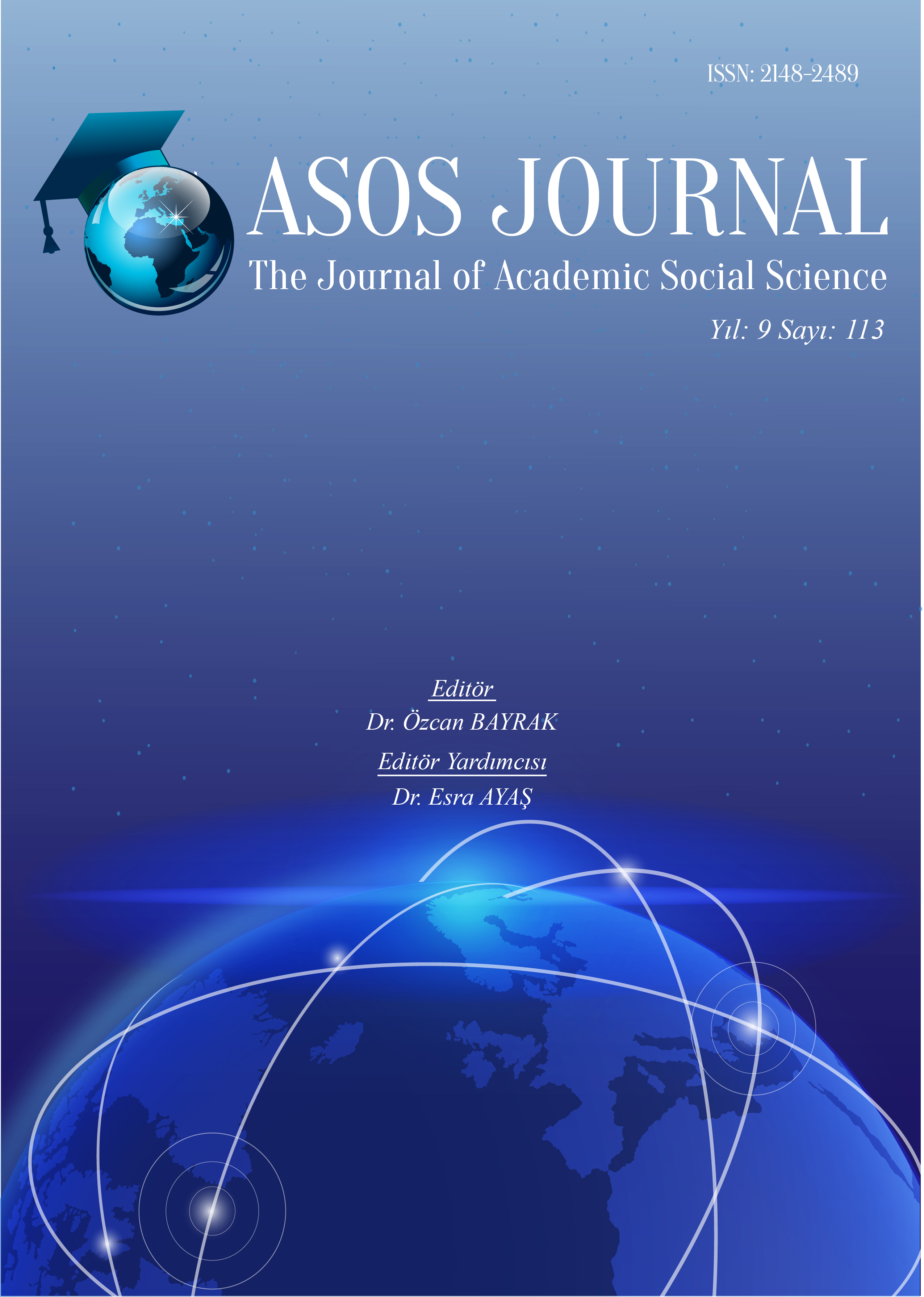Author :
Abstract
Fatima El-Tayeb'in 2010'da yayımlanan European Others kitabı ile birlikte diğer pek çok çalışma, Avrupa’da yaşayan toplulukların, sadece Avrupa-merkezli beyaz bakış açısının talep ettiği isteklerin sınırları aşmak için değil, aynı zamanda bu toplulukların dil, mekan, ses ve cinsellik stratejileri üzerinden tutarlı Euro-nasyonalist aidiyet anlayışını yıkmaya çalıştığını ortaya koymaya odaklanmıştır.Batı Avrupa'da bu tartışmalar, ekseriyetle sözde 'yerli' beyaz Avrupalı ve 'göçmen' öteki olarak algılanan etrafında dönerken; Güney ve Doğu Avrupa'da bu iki çatallı ayrım, bölgelerin yeterince incelenmemiş, karmaşık ırk ilişkileri göz önüne alındığında, daha içinden çıkılmaz bir hal almaktadır. Bu makale, Tallava müziği üzerine ortaya çıkan tartışmalar bağlamında, Kosova'daki ırk, mekan ve maneviyatın kesişim noktalarını incelemeye yönelik mütevazı bir girişimdir. Bilhassa, Tallava müziğinin, türün Arnavutça konuşan Aşkali ve Roman topluluklarıyla ilişkilendirildiği Kosova, Arnavutluk ve Makedonya'daki, ana akım Arnavutluk arasındaki çetrefil ırksal ve dini kaygılar yarattığı veçheleri inceliyorum. Makalenin ilk bölümü, Tallava müziğiyle bağlantılı olarak Romanlarla ilgili kullanılan aşağılayıcı kelimelere ve Avrupalı olarak algılanan bağlamın nasıl daha prestijli görüldüğüne değiniyor. Makalenin ikinci kısmı ise Tallava müziğinin kökeni ve nasıl anlaşılıp değerlendirildiğiyle ilgilidir. Sonuç olarak ise, Tallava müziğinin sıklıkla icra edildiği düğünler bağlamında, ırk, mekan ve maneviyat ilişkileri üzerinden değerlendirmeler sunulmaktadır.
Keywords
Abstract
Along with Fatima El-Tayeb’s European Others in 2010, many other studies have increasingly focused to see how communities across Europe use vernacular strategies of language, sound, and sexuality to not only subvert and confront coherent notions of Euro-nationalist belonging but also move beyond the need to respond to the Eurocentric white gaze. While in western Europe these debates have mostly revolved around the supposed ‘native’ white European and the ‘migrant’ other, in Southern and Eastern Europe, these binary differences are more complex given the regions’ complex race-relations, much of which remain underexamined. This article is a modest attempt to probe the intersections of race, space, and spirituality in Kosovo through the debates that have emerged on tallava music. Specifically, I examine the ways in which tallava music generates complex racial and religious anxieties among the Albanian mainstream in Kosovo, Albania, and Macedonia, where the genre is associated with Albanian speaking Ashkali and Roma communities. The first section of the article deals with the pejorative words used in relation to the Roma people in regard to tallava, and how what is perceived to be European is seen as more prestigious. The second half of this article deals with the origins of tallava and how it is valued. Finally, in the conclusion, remarks are offered on the nature of race-relations, spirituality, and space in the context of weddings, which are the main forum in which tallava music is enjoyed.
Keywords
- Easthope, A. (1991). Literary into cultural studies. Routledge.
- El-Tayeb, F. 2011. European Others: Queering Ethnicity in Postnational Europe. Minneapolis: University of Minnesota Press.
- Fiske, J. (1987). Television Culture. Routledge.
- Gilroy, P. 2019. Rhythm in the Force of Forces’Music and Political Time. Critical Times, 2(3), 370–95.
- Kosovo Agency of Statistics. 2011. Regjistrimi i Popullsisë, Ekonomive Familjare dhe Banesave në Kosovë. Rezultatet Përfundimtare. Të Dhënat Kryesore
- Mehmeti, J. 2015. “Faith and Politics in Kosovo: The Status of Religious Communities in a Secular Country.” In Arolda Elbasani & Olivier Roy (Eds.), The Revival of Islam in the Balkans 62–80. London: Routledge.
- Minga, M. 2017. Tallavaja dhe entropia e muzikës në Shqipëri. Kultura Popullore, (1-2), 125- 42.
- Nimani, A. 2017. The Wall of Antigypsyism – Roma, Ashkali and Egyptians in Kosovo. 28.
- Pettan, S. 1996. Gypsies, Music, and Politics in the Balkans: A Case Study from Kosovo. The World of Music, 38(1), 33–61.
- Rexhepi, P. 2017. “Unmapping Islam in Eastern Europe: Periodization and Muslim Subjectivities in the Balkans.” In Irene Kacandes & Yuliya Komska (Eds.), Eastern Europe Unmapped: Beyond Borders and Peripheries 53–77. New York: Berghahn.
- Samson, J. 2013. Music in the Balkans. Leiden: Brill.
- Sardar, Z., & Loon, B.V. 1997. Introducing Cultural Studies. Icon Books Ltd., Grange Road, Duxford, Cambridge.
- Silverman, C. 2012. Romani Routes: Cultural Politics and Balkan Music in Diaspora. Oxford & New York: Oxford University Press.
- Stollaj, F. 2011. Gjurmëve të Identitetit Egjiptian. Përmbledhje e Punimeve mbi Etnogjenezën e Egjiptianeve në Ballkan, Opinione dhe Analiza mbi gjendjen e Egjiptianeve të Kosovës.
- Storey, J. 2009. Cultural Theory and Popular Culture. An Introduction. University of Sunderland
- A Synopsis of ‘Egyptian Soundscapes: Music Sound and Built Environments Conference.’ (2019, January 30) Retrieved September 13, 2020. https://scenenoise.com/Features/asynopsis-of-egyptian-soundscapes-music-sound-and-built-environments-conference.
- Burney, S. (2012). CHAPTER ONE: Orientalism: The Making of the Other. Counterpoints, 417, 23-39. Retrieved December 24, 2020 from https://www.jstor.org/stable/i40115948
- Ferizaj, A, (2018). ‘Shaci’ as another product of Albanian orientalism. Prishtina Insight. Retreived October 4, 2020. https://prishtinainsight.com/shaci-as-another-product-ofalbanian-orientalism/
- Ferizaj, A. (2019). Othering Albanian Muslim Masculinities: A Case Study of Albanian Football Players, Occhialì – Rivista Sul Mediterraneo Islamico, 5, 71-93
- Hall, S. (2018). Popular culture, politics and history. Cultural Studies, 32(6), 929–952. Retrieved December 9, 2020 from https://doi.org/10.1080/09502386.2018.1521623
- Macdonald, D. (1953). A Theory of Mass Culture. Diogenes, 1(3), 1–17. Retrieved December 18, 2020 from https://doi.org/10.1177/039219215300100301
- Muharrem Ahmeti & Amza Tairov—Italia. (2018, January 17). Youtube. Retreived October 4, 2020. https://www.youtube.com/watch?v=anZszDvC9Gw
- Rona me Grupin e Pëllumb Elmazit—Kasmangjesa tu Naxhije. (2020, April 8). Youtube. Retreived October 4, 2020. https://www.youtube.com/watch?v=-2GxtLK0Tzo
- The sounds of tallava. (2018, January 22). Prishtina Insight. Retreived October 4, 2020. https://prishtinainsight.com/the-sounds-of-tallava-mag/
- Williams, R. (2018). Popular culture: History and theory. Cultural Studies, 32(6), 903–928. Retrieved December 18, 2020 from https://doi.org/10.1080/09502386.2018.1521620





